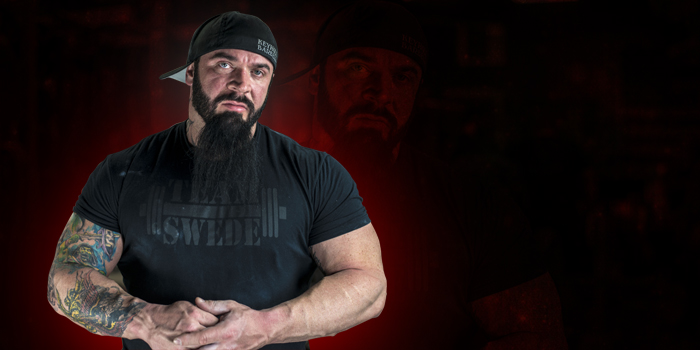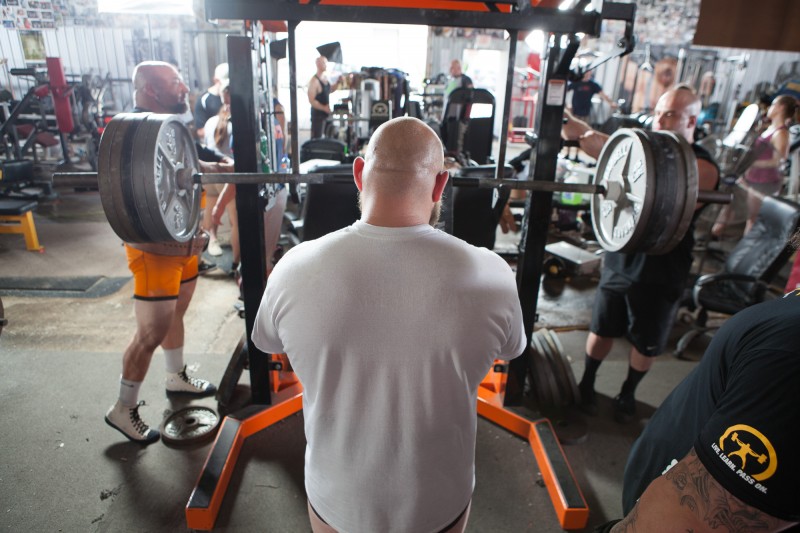
In my early 20s, I spent some time in Austria. Not a terribly long time, but not a short time either. It wasn't one of those "Travel Europe" scenarios, where you're crammed into a bus like sweaty sardines, staying in hotels in different cities every night, and taking in rushed, guided tours throughout the days. Those always seemed like work to me, and I don't need to fly thirteen hours to do that.
I rented an attic apartment in a small town called Kuchl with my girlfriend at the time, Annemarie. We would ride the rail to different places and train at new gyms when we felt like it. It wasn't much hassle to find the places, as long as we knew the names of the facilities so we could ask how to get there at the information centers in each town. We even trained at a gym in Gratz, where Arnold Schwarzenegger lifted as a young man. What was more of a hassle were things like trying to shop for groceries, or asking for directions to a laundromat in the small town of Kuchl, where basically no one spoke English. We had to pick up specific German words for things like milk so we didn't end up with cream, or chicken so we didn't end up with pork. We actually got pork by accident once. It wasn't bad, but it wasn't what we wanted either. And try to explain to someone on the street who doesn't speak your language that you need to find a laundromat — by playing charades and pulling on articles of your own clothing. They will look at you like you're out of your fucking mind, I assure you. But simply say "Wäsche," in this case, and you'll get a nod and a finger point in the right direction.
READ: 5thSet Trial and Error — The Failed Experiments
My point here is that sometimes you have to give in and learn the terminology, just because it makes things easier. This applies to programming terminology for your training, for sure. If you are someone who will hire a personal trainer to walk you through every session then you have nothing to worry about. You can just show up and do what he or she says. That's like if you travel with a tour group and have all your meals in restaurants and hotels. Hell, the hotels even have laundromats most of the time.
But most of you reading aren't going to hire a personal trainer and, even if you plan on hiring a coach, you'll need to learn enough German to be able to purchase milk and not accidentally grab a bottle of cream. In other words, enough terminology so the two of you can communicate effectively. My advice: don't resist this. Keep things as simple as possible, but not a bit simpler than that.
I know there is an entire subset of would-be "coaches" out there trying to make things as complicated as possible so they can establish and demonstrate a need for themselves, to justify their own existence. All this when, in fact, many of them truly don't have much to offer. That's not what I want for you at all. I want you to understand that all of this is not as complicated as some would have you believe. In that understanding, you will be liberated from the idea that you need some interpreter with special knowledge to hold your hand and decipher the next move for your training on a weekly basis. The more you understand about your own training, the freer you will become.
If you run 5thSet, you can think of me as your coach. I can handle the complex parts, but you need to know enough terminology so we can understand each other. Some terms are specific to 5thSet and I'll touch on those later in this article. But first I want to define some universal terms you should have a decent handle on, regardless of the method of training you choose to run.
When you hear terms like microcycle, mesocycle, or macrocycle, don't resist. Understanding them can only help you. I'll make this as simple as possible, but no more.
Universal Programming Terminology
Microcycle
A microcycle is the smallest repeating cycle in any program. These are what most programs refer to as a week. Why not just refer to them as a week, like other programs do? Well, on 5thSet, microcycles are not a week. They are nine days long.
Mesocycle
A mesocycle is a group of microcycles, which are to be executed in a sequence. I can't think of a more succinct way to refer to this type of cycle than to use the proper term, mesocycle. On 5thSet, a typical mesocycle consists of six microcycles, though peaking cycles contain fewer. In reality, no matter the style of training, if a coach can't lay out what a full mesocycle will look like, ahead of time, with a narrow margin of deviation, I don't believe that coach really knows what they are doing. They are probably making it up as they go. The only alternative is that they want to keep you making payments, so they are giving you bite-sized portions of programming, which is all well and good until you can't get ahold of them for a few days and have no idea what you're supposed to be doing. (Sound familiar at all?) The role of a coach is to provide a program and to be present to help navigate problems, if and when they arise.
Macrocycle
A macrocycle is the largest type of repeating cycle in any powerlifting program. It should consist of a series of progressive mesocycles, ending with a peaking mesocycle leading into competition. On 5thSet, this looks like four mesocycles, the last of which is a peaking cycle.
Here is an example of another piece of terminology that is specific to 5thSet, but understanding what it means and the reasons for it could benefit you regardless of how you train.
MSM (Mechanically Similar Movements)
What 5thSetters refer to as "Mechanically Similar Movements" are a huge part of what makes the methodology so effective. Some other common names for this type of movement are "supplemental" or "secondary" movements.
The MSM term when running 5thSet refers to the movement performed immediately after the main work, which is modified in some way that makes it possible to safely add additional strength training volume load while remaining similar, mechanically, to the main lift. This can look like a slightly reduced range of motion, for example, using a board press as MSM for bench press. It could also be a slight variation of the main lift, like using an SS Yoke Bar or front squat as an MSM for squat.
The idea for the first option is to remove the most vulnerable range of motion from the movement, because this will allow the lifter to continue to load additional volume without as much risk for injury. It's important when using a board press or a rack pull—or any reduced range of motion MSM—to make sure to mimic the mechanics the lifter would have from that portion of the movement had they pulled from the floor or benched from the chest. Doing so will improve dynamic correspondence or carryover to the main lift.
The second option is to use a variation of the main lift that changes the emphasis in a way that could prevent overuse but still preserves a full range of motion. The options here are vast, but it's important to make sure that the variation is not too similar to the main lift in this case. For example, using front squat or SS Yoke Bar for a squat MSM changes the emphasis by putting more stress on the quads and upper back. This prevents the lifter from overusing the muscles of the hips and posterior chain, as long as the intensity and volume guidelines laid out in the method are honored.
Hopefully, you learned something new from this article. At very least, I hope it gave you some things to think about. Please feel free to share it and don't hesitate to reach out to me with topics you'd like to learn about in future articles.












I'm wondering if your "5th Set Program(s) would be a good fit for me. I've trained for much of my adult life (45 years or so) and over that time I've used various programs. For the last 5 years I've used some of the 5/3/1 versions. I'm 71 and while I no longer compete (PL), I still enjoy strength training. I train at a commercial gym with fairly adequate equipment (free weights, power racks, etc.) although missing some of the essentials such as a glute-ham raise, safety squat bars, chains etc. Not sure how much specialized equipment your programs require.
Thanks for any information you can provide.
Joe
I think you'd do great with it and no special equipment is required. You can do great with just a bar, a bench and a rack. Ellen Stein is 66 and has been using 5thSet for years to beat out ladies in competition half her age.
Joe
I don't think you're being a jerk at all. This is how you learn things! ;)
To address your statement, (which to be fair was a little confusing, because it ended with a question mark) it would in fact be "a little ironic," if those terms were interchangeable, but sadly— they are not. I included the terms "supplemental" and "secondary" in the description, because MSM's can be considered either, fairly. However, not all supplemental and secondary movements can be considered MSM's. It's a more specific term, which is helpful to the lifter, given the context. That point is laid out succinctly in the books.